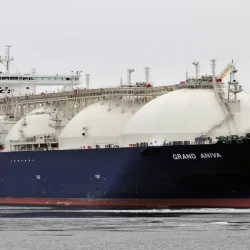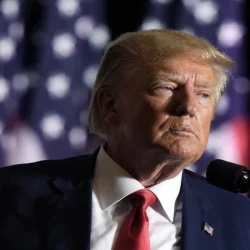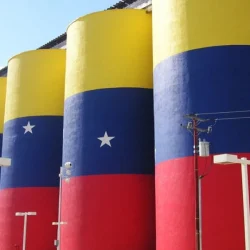Iran’s crude oil prices witnessed significant fluctuations throughout the year 1403 (March 2024–March 2025). While geopolitical tensions and political events triggered short-term spikes or drops, the overarching trend reaffirmed that supply and demand remain the dominant forces shaping the oil market.
Iran’s heavy crude opened the year trading at $81.60 per barrel, and within two weeks peaked at $87.71. This surge was largely driven by escalating concerns over global oil supply due to ongoing drone attacks on Eastern European refineries and rising tensions in West Asia. However, as regional tensions briefly deescalated, prices pulled back below the $80 threshold.
By mid-June, oil prices fell further to around $76, influenced by increased U.S. crude inventories and decisions by some OPEC+ members to ease voluntary production cuts. The decline was reversed in July, following disruptions from a major hurricane and speculation over renewed geopolitical instability in the Middle East. At this point, Iran’s oil price surpassed $87 again, in line with Brent and OPEC basket prices.
During summer, new regional security incidents briefly moved the market, but those effects faded quickly. Concerns about weaker demand from major economies, particularly China, and fears of a potential recession in the U.S. pushed Iranian oil prices down to a yearly low of $67 by mid-September.
In early autumn, renewed geopolitical threats—including targeted attacks on energy assets—sent prices temporarily back above $76 per barrel. However, prices soon retreated again as risks subsided. The political shift in the U.S. had minimal impact on Iranian oil prices, which remained within a narrow band of $69–$73.
As global prices softened into December, OPEC+ announced a delay in restoring 2.2 million barrels per day of production until April 2025, signaling continued supply discipline. This decision, along with tighter sanctions on certain exporters, helped lift Iranian oil to $78.80 by early January.
Still, this upward trend reversed in February due to renewed political pressure, including calls for lower oil prices tied to international negotiations. By mid-February, Iranian crude dropped to $72 per barrel.
In the final month of the year, global economic uncertainties, including tariff disputes and concerns over fuel demand, drove prices lower once again. Iran’s oil traded between $68–$70 in March 2025. Intensified U.S. sanctions on Iranian oil also narrowed the traditional price gap between Iranian heavy crude and Brent, occasionally pushing Iran’s prices above Brent.
Notably, major internal political developments in Iran during the year had little effect on oil price movements.
Overall, Iran’s oil price performance in 1403 illustrates that while political and geopolitical shocks can drive short-term volatility, long-term market direction is ultimately governed by fundamentals—namely, supply and demand. Continuous monitoring of these dynamics remains essential for economic and energy policymakers.









